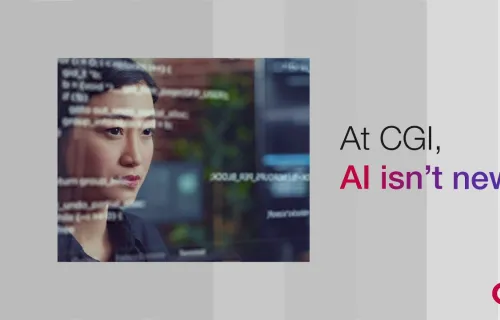Did you digitally file your taxes this year? Did you recently renew your driver’s license online, or your car registration or passport? For many of us, digital government has arrived, and we are so grateful—particularly as the pandemic has limited most opportunities for in-person services.
Interestingly, while meeting citizen expectations by becoming digital organizations persists as the top trend for national, state, provincial and local government executives in the CGI Voice of Our Clients interviews, those same interviews reveal that governments are trailing the private sector in driving digital adoption and realizing value from their digital investments.
How can governments improve their digital results? Let me set the stage for a few thoughts and recommendations derived from my real-world, 12-year crusade in making the electronic filing and payment of taxes an appreciated, ubiquitous household experience.
In the U.S., the electronic filing and payment of taxes was not an overnight success. I literally spent 12 years of my career on this crusade: 5 years with the South Carolina Department of Revenue, 5 years with Intuit (think TurboTax®) and 3 years as Assistant Commissioner of Electronic Tax Administration with the Internal Revenue Service. This crusade was rife with challenges and obstacles and, at times, much sweat and a little luck, as well as persistence and collaboration. From this experience, I learned many lessons about what it takes to drive digital adoption and achieve real value for the taxpayer dollars invested. Here are 5 of these lessons learned:
- Never forget whom you are serving. So much is written (including entire books) about understanding not simply the demographics of your customer (in this case the citizenry you are serving), but also the psychographics. Even more so, never forget to understand their journey as they attempt to find, locate and use your service. Too little research into citizen pain points and expectations leads to too little use. Frankly, Generation Z has arrived and their expectations are grounded in “engaging and entertaining” digital services (think video games). So take the time and effort to survey and conduct focus groups with citizens or citizen advocates. In the case of electronic tax filing, this included serious and extensive conversations with tax preparers, banks, credit card companies, software publishers, and others. The more you know and understand, the better the solutions you will bring to life.
- Decide how you will measure success before you begin. My metric for success in a round of golf has always been whether I finish the round with more golf balls than I started. While I always have finished with a smile, others might have tossed their clubs into the water, broken a club over their knee, or used some unprintable language. I jest of course. In digital citizen services (and digital customer services in the private sector), you certainly want to measure usage and satisfaction with the service, but you also want to establish goals for and measure the digital experience itself. For example, measure the availability of the service, its response time from page to page, how citizens found the service, and much more. You can’t fix what you don’t know is broken.
- Deliver an MLP, not an MVP. This is the “fix it even if it ain’t broken” lesson. All too often in government services, we stop innovating when we have achieved the minimum viable product (MVP) because that was our target. We then move to spend taxpayers’ money on the next best project. Actually, your target should be a minimum loveable product (MLP). In other words, don’t stop improving the experience, innovating the service, or making it easier, faster, more intuitive and personalized. Expectations evolve and, frankly, citizen expectations are not set by government services, but by their experiences in retail, banking, social media, and even the games they play online. If your digital experiences are oh-so 20th century, then they won’t inspire rapid and wide adoption.
- Build trust in the service before you launch. Citizens expect that their data will be accurate and current, that their digital experiences are secure and private, and that their services will be available when they need or want to use them. You need to design for these requirements from the outset. If you haven’t updated your service’s website since 2019, users will wonder if the information is current and fresh, and that affects whether they’ll visit or call. Noticeably update your sites and experiences with new blog posts, and other relevant content, and date that content so visitors know it’s fresh.
- Honor the Golden Rule of Digital. Succinctly, this rule is, “While the technology is not necessarily easy, delivering the right experience is even harder, and managing the organizational impact is the hardest of all.” In the case of the latter, the real challenge in driving digital results is changing the organizational mindset—the culture—to embrace digital and operate agilely. Leading by example and providing tools and settings that exude digital (including virtual alternatives) will make or break digital adoption and generate value from your digital investments. In our 2021 Voice of Our Clients interviews, cultural change and change management rise significantly as a trend. If you demonstrate your digital mindset, others (including the citizens you serve) will come to believe the same.
I’m interested in hearing lessons learned from your digital journeys. Please reach out.






